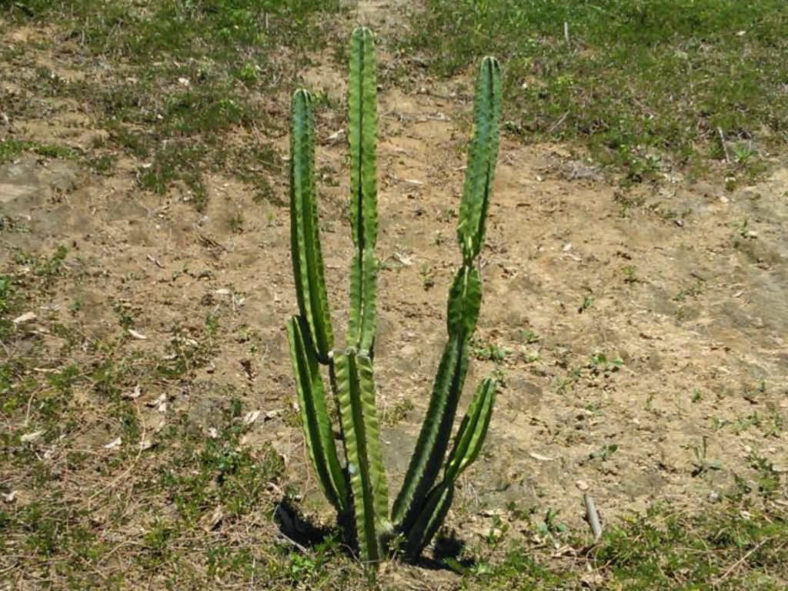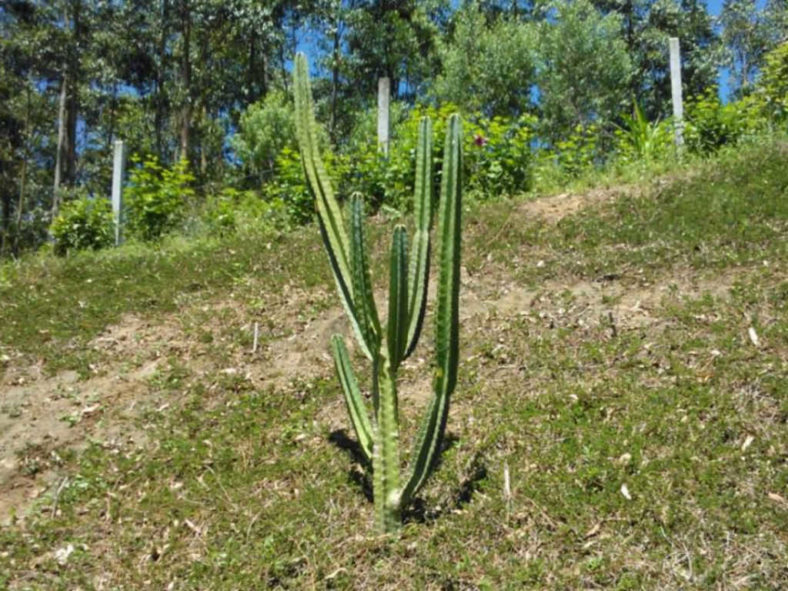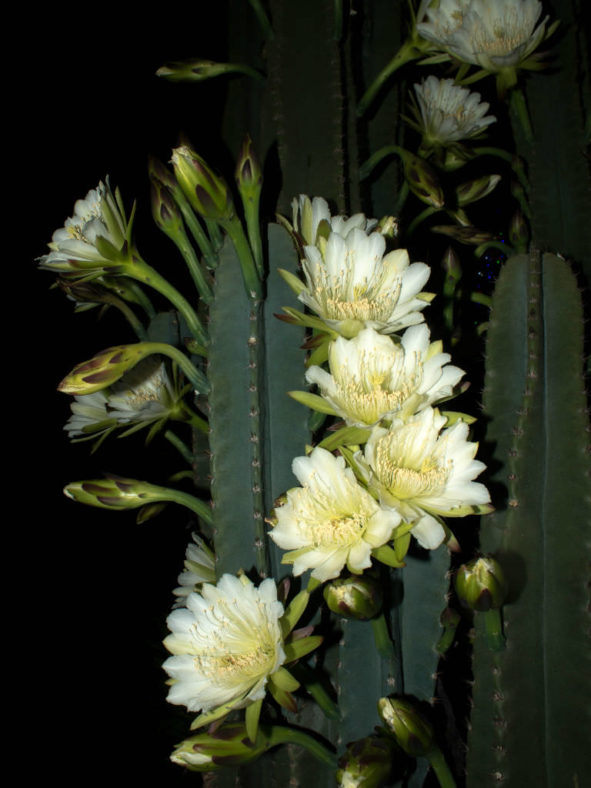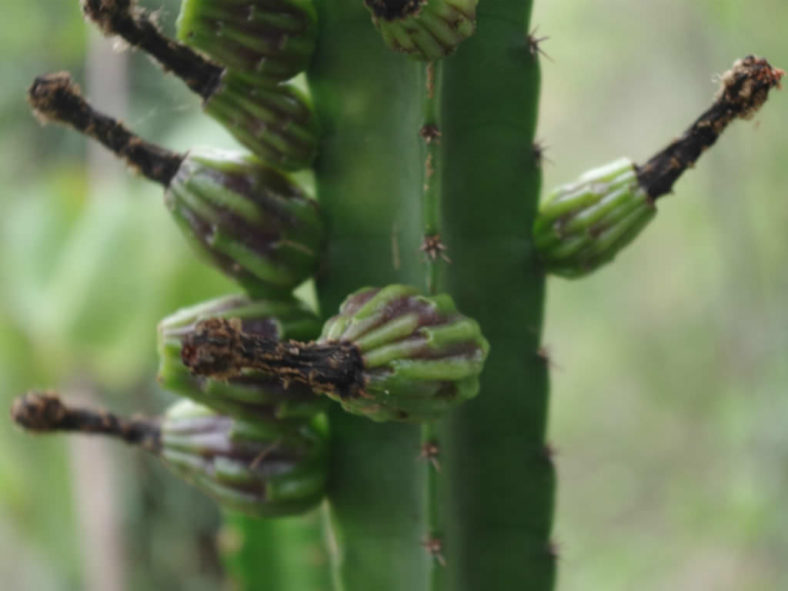Scientific Name
Cereus vargasianus Cárdenas
Scientific Classification
Family: Cactaceae
Subfamily: Cactoideae
Tribe: Cereeae
Genus: Cereus
Etymology
The specific epithet "vargasianus (var-gas-ee-AY-nus)" means "coming from Vargas" and probably refers to the location where this species was first discovered.
Origin
Cereus vargasianus is native to Peru (Cuzco).
Description
Cereus vargasianus is a large, tree-like cactus with segmented, glaucous green branches that arise from a short trank. It can grow up to 26.2 feet (8 m) tall. The branches have 4 to 5 wavy ribs measuring up to 2 inches (5 cm) tall, gray areoles, and 9 to 10 brownish spines not always distinguishable as central and radial spines. The spines can grow up to 0.6 inches (1.5 cm) long.
The flowers are white and can reach up to 4 inches (10 cm) in lenght. The fruits are yellow with white pulp, ellipsoid, and can grow up to 3.2 inches (8 cm) long.

How to Grow and Care for Cereus vargasianus
Light: Cereus cacti like full sun. They can handle partial shade but thrives in direct sunlight. A sunny south, east, or west window is a good spot to grow a C. vargasianus indoors. Get your cactus outdoors from spring to fall for fresh air and extra light if possible.
Soil: This cactus does not like to have "wet feet" and needs to be grown in well-draining soil. Use commercial soil mixes for cacti and succulents, or make your own potting mix.
Hardiness: During the active growth period, Cereus cacti like warm temperatures, while in winter, they like cooler temperatures. C. vargasianus can withstand temperatures as low as 20 to 50 °F (-6.7 to 10 °C), USDA hardiness zones 9a to 11b.
Watering: From spring to fall, water thoroughly, but allow the soil to dry out before watering again. With the arrival of fall, gradually reduce the watering frequency. When C. vargasianus is dormant in winter, give it just enough water to prevent shrinking.
Fertilizing: Cereus cacti like regular fertilizing. A balanced, water-soluble fertilizer, diluted to 1/4 strength, can be added to each watering. A 10-10-10 fertilizer is ideal. Do not feed during the winter.
Repotting: While C. vargasianus is young, it is recommended to repot each year in early spring to provide the plant with fresh soil, inspect the root system, and move it to a larger pot if necessary. Once it matures, repot only when your cactus is outgrowing its pot.
Propagation: Using stem cuttings is the easiest method to propagate Cereus because seed propagation is a slow process. Planting of the cuttings is best done when the cactus is actively growing. Spring and summer are the best time to sow the seeds.
Learn more at How to Grow and Care for Cereus.
Toxicity of Cereus vargasianus
Cereus cacti are non-toxic to humans or animals.
Links
- Back to genus Cereus
- Succupedia: Browse succulents by Scientific Name, Common Name, Genus, Family, USDA Hardiness Zone, Origin, or cacti by Genus
Photo Gallery
Click on a photo to see a larger version.


